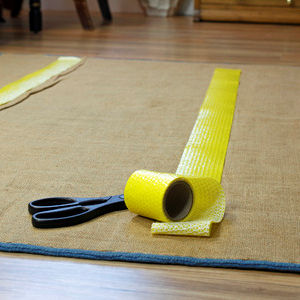Wet or Slippery Surfaces
A wide variety of surfaces are available indoors. Although most provide some degree of slip resistance in their original state, there are some exceptions. Highly polished floors can be extremely slippery even when dry and definitely increases the potential for a slip when moisture is present. Other types of floors present hazards, especially in the presence of moisture, liquid spills, or food.

Control measures that can minimize injuries caused by wet surfaces include the following:
- anti-skid adhesive tape is an excellent and economically feasible control to prevent slips, trips, and falls;
- moisture-absorbent mats should be placed in entrance areas but be careful that they do not become tripping hazards;
- floor mats should have beveled edges, lie flat on the floor, and be made out of material or contain a backing that will not slide on the floor;
- wet floor signs attract attention but should not be a sole control technique. It is also important that once the hazard is removed, the sign is also be removed, so they are not ignored;
- implement a policy or procedure that gives the appropriate action to be taken when someone causes or comes across a food or liquid spill;
- area rugs or mats in food preparation areas or bathing facilities may be an effective measure by increasing the coefficient of friction when moisture is present; and
- where wet processes are used, maintain adequate drainage, mats, and false floors whenever possible.
Knowledge Check Choose the best answer for the question.
3-4. What an excellent and feasible control to prevent slips, trips, and falls?
You forgot to answer the question!
